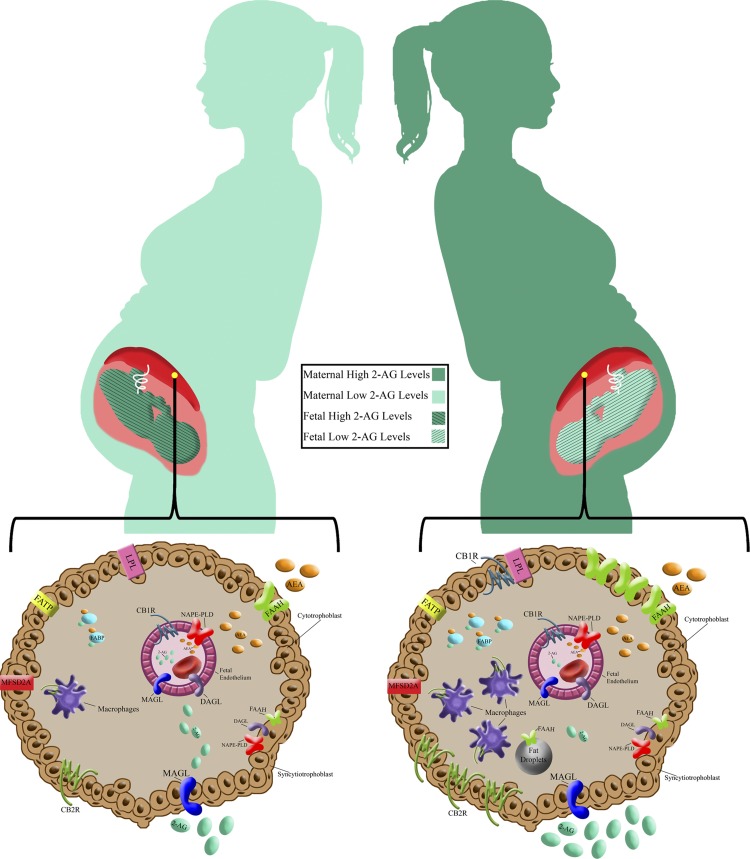Fig. 5.
Graphic summary of presented findings in a framework of selected reported obesity-related placental changes, which are relevant to endocannabinoid transport and metabolism. Top: increased maternal and decreased fetal systemic 2-arachidonoyl glycerol (2-AG) concentrations in maternal high-fat diet (HFD) consumption. Placental 2-AG concentration is decreased in maternal obesity (MO) (13). Bottom: cross-sections of placental terminal villi. CB1R is expressed in the fetal endothelium of control (CTR) animals and additionally in the syncytiotrophoblast (ST) of the HFD group. Macrophages infiltration (17, 28), fatty acid-binding protein (FABP) and fatty acid transport protein (FATP) expression (24), lipoprotein lipase (LPL) activity (66), and lipid droplet (LD) formation (39) were increased, and docosahexaenoic acid (DHA) was reduced (16) in placentas in MO and in the HFD group. MFSD2A is expressed in placental ST and is a transporter of DHA (58, 64), which in turn is a precursor of endogenous cannabinoid (eCB) (31). Associations with eCB metabolism: LDs are functional sides of AEA inactivation (42). CB2R is expressed in the cytotrophoblast (CT) and macrophages (52), FABP is involved in eCB transport (43), and LPL activation is CB1R mediated (78). The fetal endothelium expresses monoacylglycerol lipase (MAGL), diacylglycerol lipase-α (DAGLα), N-acyl phosphatidylethanolamine phospholipase D (NAPE-PLD), and CB1R; CT expresses CB2R, DAGL, Fatty Acid Amide Hydrolase 1 (FAAH-1), NAPE-PLD, and MAGL, and ST expresses CB1R, MAGL, and FAAH-1.

